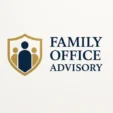Data Governance & Document Management #
Data governance and document management provide the framework for organizing, protecting, and accessing sensitive information within a family office. This includes legal documents, trust deeds, investment reports, corporate records, banking details, tax filings, and personal identity information. Effective governance improves operational efficiency, ensures compliance, reduces risk, and enables secure collaboration with advisors and family members.
Context & Importance #
Family offices handle large volumes of confidential data across multiple jurisdictions, entities, and counterparties. Without structured data governance, information becomes fragmented across inboxes, drives, and devices—creating operational risk, inefficiencies, and exposure to cyber threats. A formalized system ensures that sensitive records are stored securely, accessible only to authorized individuals, and aligned with regulatory requirements such as GDPR, Swiss DPA, CRS, and FATCA.
Core Components of Data Governance #
- Data classification: Categorizing documents by sensitivity (e.g., confidential, restricted, public).
- Access control: Role-based permissions, multi-factor authentication, least-privilege principles.
- Secure storage: Encrypted document management systems, secure cloud environments, and digital vaults.
- Retention & deletion policies: Automated rules for archiving, purging, and legal holds.
- Audit trails: Full visibility into who accesses, edits, or downloads sensitive documents.
- Compliance monitoring: Ensuring adherence to data protection and tax reporting regulations.
- Business continuity: Backup systems, redundancy, and disaster recovery protocols.
Document Management Framework #
A robust document management framework standardizes how documents are stored, labeled, updated, shared, and archived. This reduces duplication, enhances retrieval speed, and safeguards critical information.
- Central repository: A secure digital vault or enterprise-grade document management system.
- Naming conventions: Standardized file names and metadata tags for consistent classification.
- Version control: Automatic tracking of revisions and prevention of conflicting versions.
- Secure sharing: Permission-based file access, expiring links, and encrypted transfers.
- Workflow automation: Approvals, signatures, and document lifecycle management.
- Integration: Linking with reporting platforms, CRM, or entity management systems.
Implementation & Best Practices #
- Perform a data inventory: Identify all documents, their location, and sensitivity levels.
- Define clear policies: Document data standards, access rules, and handling requirements.
- Digitize paper records: Scan, index, and securely store physical documents.
- Enforce least-privilege access: Grant access only to those who need it.
- Use secure portals for advisors: Avoid email attachments; require encrypted exchange.
- Train staff and family: Ensure everyone understands secure handling practices.
- Regular audits: Check compliance with privacy laws and internal standards.
- Automate backups: Implement encrypted and redundant backup systems.
Common Challenges #
- Documents scattered across personal devices, inboxes, and drives.
- No standardized naming or filing structure.
- Unauthorized access due to weak permissions governance.
- Data loss from poor backup practices.
- Regulatory breaches due to missing documentation or retention failures.
- Difficulty locating critical documents in emergencies.
See Also #
- Cybersecurity & Data Privacy Controls
- Vendor Management & Outsourcing Strategy
- Technology Infrastructure for Family Offices
- Family Governance




